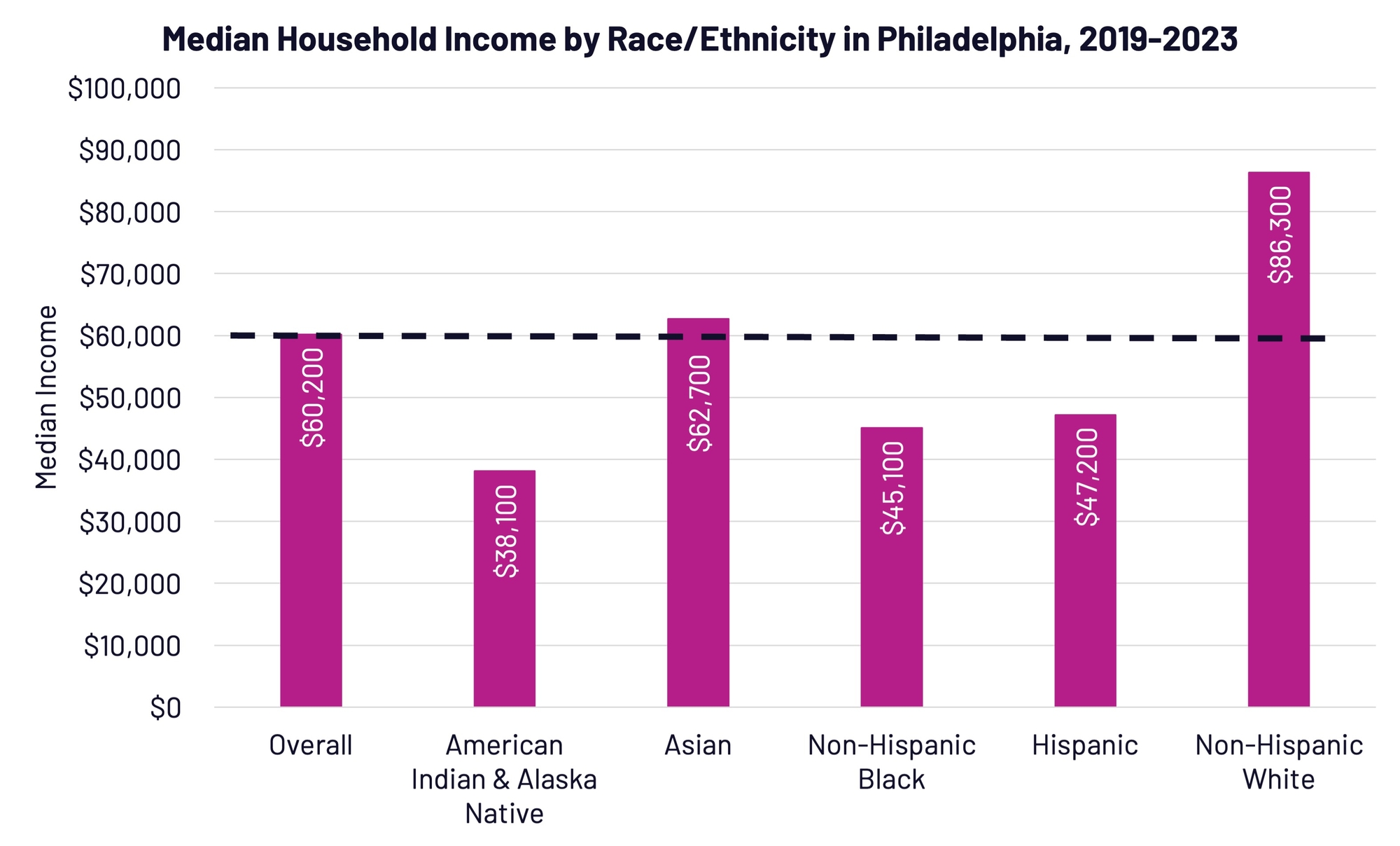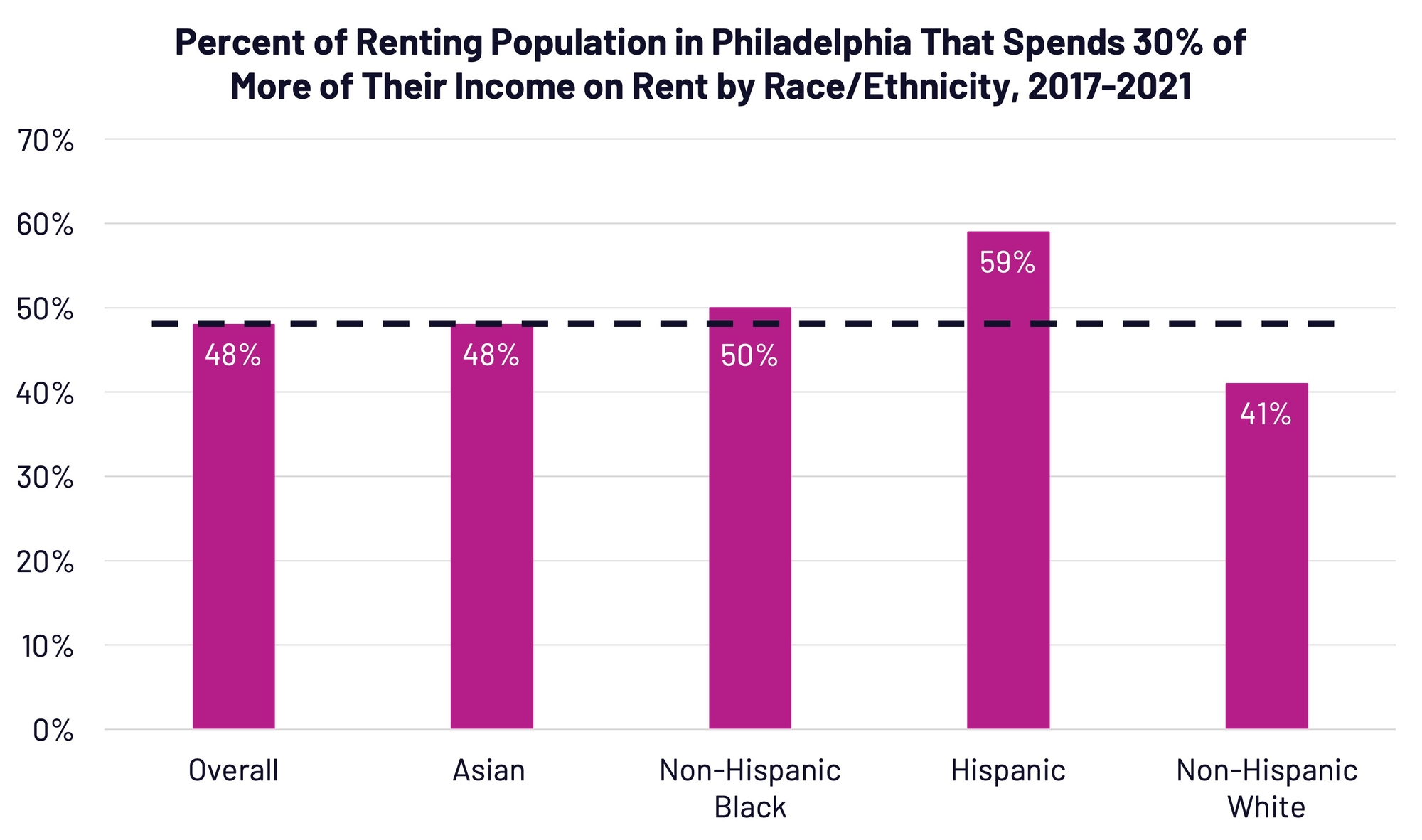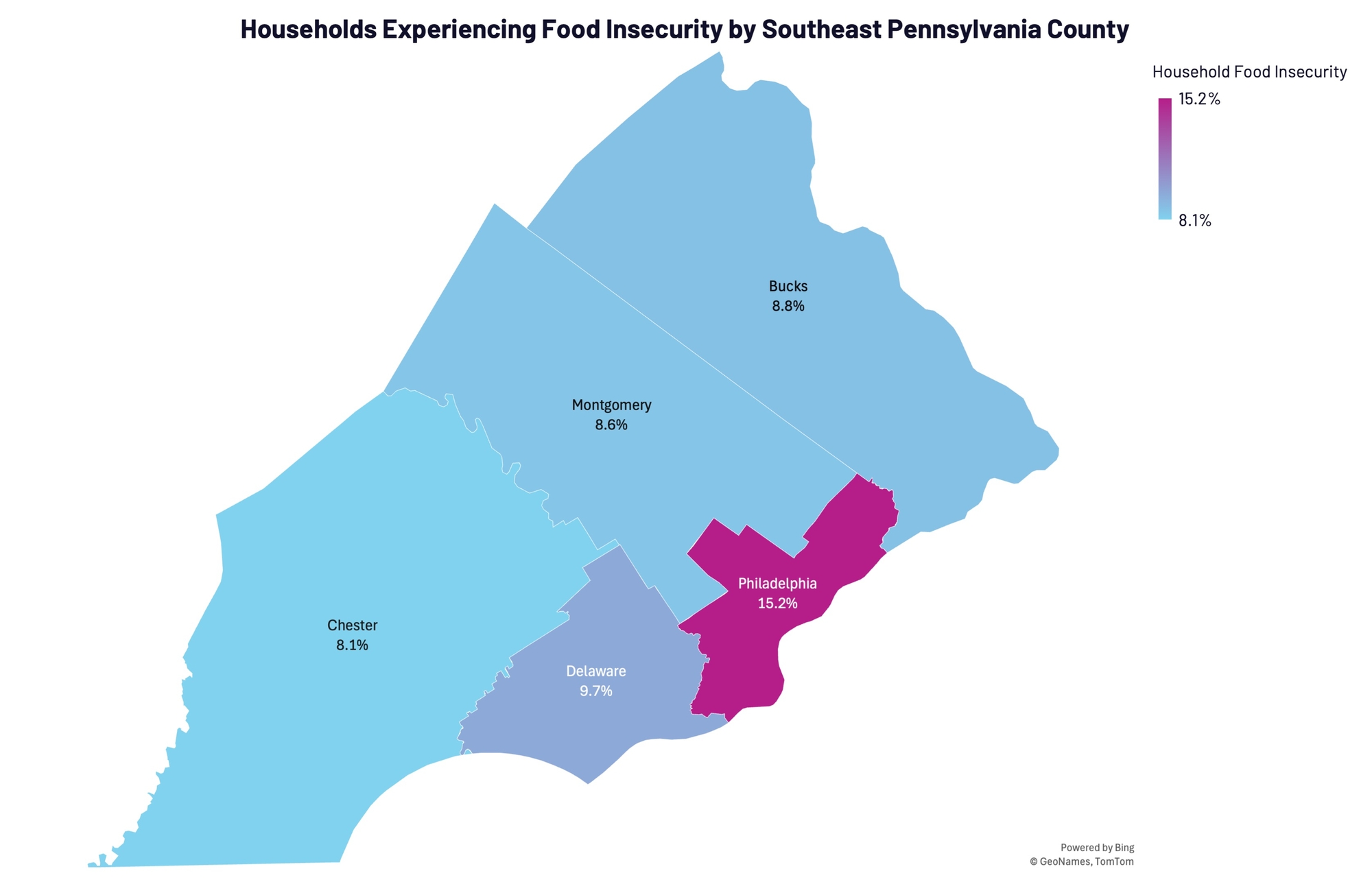Social Drivers of Health include the non-medical context in which people live that affect health outcomes, including socioeconomic status, neighborhood conditions, housing, employment, and food access. Disparities in SDoH promote inequities in health-related social needs. Improving whole person health care requires screening, referral, and outcomes tracking of health-related social needs.
In the 2025 Regional Community Health Needs Assessment, Philadelphia community members identified the key SDoH impacting their day-to-day quality of life and health, including community mental health and substance use, the availability and affordability of healthy food, and other environmental hazards (e.g., overgrowth, delayed trash pick-up, and infrastructure disrepair. AHE's projects and initiatives focus on the following areas:
 Poverty Rate
Poverty Rate
Percentage of Population Below Poverty Level
 Income and Employment
Income and Employment
Household Income
 Housing
Housing
Percentage of Renting Population Spending 30% or More of Income on Housing Costs
 Benefits Access
Benefits Access
Percentage of Households Experiencing Food Insecurity and Percentage of Households Receiving SNAP Benefits
Key Metrics in Philadelphia
A higher percentage of the population living in North Philadelphia and West Philadelphia are below the poverty level. Zip codes that encompass these Philadelphia regions are predominately Non-Hispanic Black and Hispanic.

Source: Philadelphia Department of Public Health (2023). Health of the City Report.

Source: Philadelphia Department of Public Health (2023). Health of the City Report.
Non-Hispanic Black, Hispanic, and American Indian and Alaska Native Philadelphians all have median household incomes significantly below the overall median income among Philadelphians of $60,200. Non-Hispanic White Philadelphians have median household incomes significantly above the overall population median.
Unaffordable housing (when more than 30% of a household's total income is spent on housing costs, including rent and utilities) is a significant burden among all Philadelphians. Hispanic Philadelphians have the highest percentage of the population living in unaffordable housing.

Source: County Health Rankings, 2025.

Source: Philadelphia Department of Public Health, Neighborhood Food Retail in Philadelphia Report, 2019.
Food insecurity is perpetuated in Philadelphia County through physical barriers (transportation to fresh food vendors and grocers) and economic barriers (low-income neighborhoods are less likely to have fresh foods while also prohibiting families from affording healthy foods).
Philadelphia County had significantly higher rates of household food insecurity in 2022 with 15.2% of households experiencing food insecurity compared to the lowest rates in Chester County where only 8.1% of households experienced food insecurity.
Accessing federal benefits like the Supplemental Nutrition Assistance Program (SNAP) is a critical safety net for low-income families to afford food. However, research suggests that over 9 million people in the United States do not receive benefits for which they are eligible, including SNAP. Philadelphia zip codes with higher percentages of households receiving SNAP benefits are also areas with lower concentrations of high-produce stores, which indicates less access to healthy foods that support chronic disease prevention.

Source: Philadelphia Department of Public Health, Neighborhood Food Retail in Philadelphia Report, 2019.
A Comprehensive Approach to Reducing Disparities
By improving disparities in the social drivers of health (SDoH) and health-related social needs, Philadelphians may experience improved health outcomes, reduced healthcare costs, and improved quality of life. Addressing disparities in SDoH is an essential component of whole person healthcare to ensure that individuals can lead healthy lives, access and afford healthcare services, and engage in supportive healthy communities.
According to the 2025 Regional Community Health Needs Assessment, unmet social needs and disconnected social services providers across Philadelphia limit community uptake and engagement in available services.




